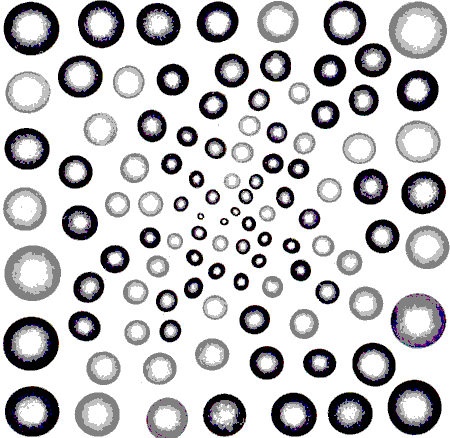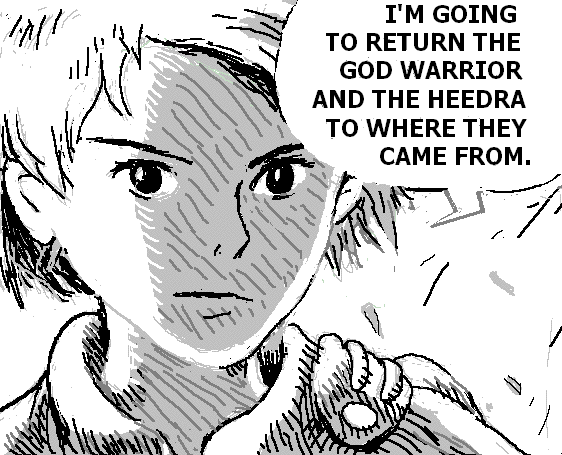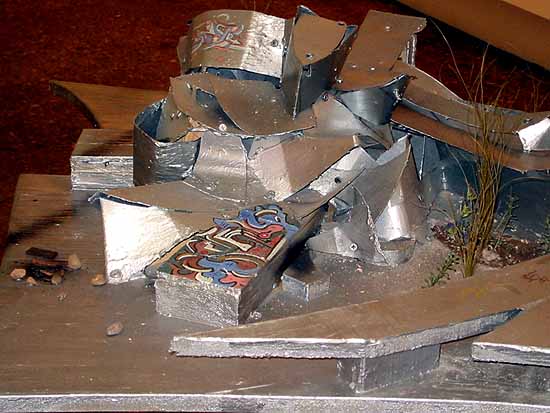View current page
...more recent posts

Crap houses
Here's what I dislike about the tech/geek/art community, as exemplified by the Eyebeam "reBlog." reBlog is a bunch of recycled links from a particular group of bloggers, curated by a single individual down to a coolest-of-the-cool selection. Fine, so far, but there's very little in the way of text, thought, or explanation here--just feeding the endless craving for (mostly tech) novelty. So, I see this item culled from boingboing captioned "Print houses from CAD drawings using an adobe-extruding robot." I'm not completely following this. [If I'm not mistaken, the reBlog post has since been slightly expanded.] I click the link and learn more about an aesthetic nightmare waiting to be born, which we're supposed to think is great, I guess:
A robot for "printing" houses is to be trialled (sic) by the construction industry. It takes instructions directly from an architect's computerized drawings and then squirts successive layers of concrete on top of one other to build up vertical walls and domed roofs.You know what that sounds like to me? That sounds like shit. Frank Gehry meets Planet of the Apes. Besides throwing tradesmen out of work (yeah, I know, boo hoo, progress marches on), it has the potential to turn the construction industry into McDonalds, shitting out thousands of McHouses, McFlats, McMalls, and McOffices. And, it violates what ought to be Rule One of fusing technology and the arts (including architecture): "You shouldn't do something just because you can." How about a little criticality here, art/tech people?
UPDATE: Bill Schwarz has another link on the "extruded house." This one doesn't look like Planet of the Apes, more like the stone slave huts they put up in the Caribbean years ago for people working in salt ponds and the like. And sure enough, the obligatory quote: "It's hard to imagine construction unions taking this lying down, and union opposition is expected. But [P]rofessor [Khoshnevis, the inventor] points out that we are moving towards a society in which just about everything else is fabricated by machines. Why should houses be different, he asks?" Yeah, why? Nasty damn unions, always getting in the way of capitalist innovation.
UPDATE 2: Post edited slightly so I sound like less of a Luddite, if that's possible. Jim has a good response to my outburst in the comments.
UPDATE 3 (Feb 2005): I take back everything I say about the Eyebeam reBlog since they were kind enough to indulge my tech-skepticism by inviting me to guest reBlog for a few weeks.
Cry Me a River, Tim and Sue
Tim Noble and Sue Webster, YBAs (Young British Artists) who recently showed at PS1 here in NYC, are known for three types of work: a sculpture of male and female Neanderthals reminiscent of Ron Mueck's sentimental output, flickering Vegas-y light pieces, and collections of odd rubbish that cast figurative shadows, a trick that Mac Adams, an OBA (Old British Artist, but living/showing in the States), has been working with for years. The pair is profiled in this month's Sculpture magazine, and as the following excerpts make clear, they want us to know they have problems:
Noble: "When we first started doing [the light pieces], to us, they were aesthetically insulting. You were supposed to...be confronted by them 10 feet in front of your face... [B]ut as time goes by and they get photographed more and more, you don't get the closeness. You need that slap in the face.The last two quotes were interspersed with the usual protestations that they've taken their career "off the rails" and are no longer on the "roller coaster"--as they move from MOMA affiliate PS1 to the Museum of Fine Arts in Boston. Ah, humility.Webster: "We take reproductions very seriously so that the work can be documented and find its place in history."
Webster: "When you are young and starting out you have nothing to lose, you are alone in the studio making work and no one is looking. But then you get exhibited, and the ball starts rolling: you get booked for shows and everyone wants a piece of you. Then they try to determine when you finish the work. You can get drawn into the system, where you'll have a show in London and then one in New York, and someone says when the work gets made and even tries to influence what it is that has to be made."
Webster: "We get offers every day from people who build their careers around us. You, as an artist, are actually just producing a feed in the system. They harass you to take part in some project because it is all about them. We have to be aware of that because we could have our careers tied up for the rest of our lives producing one show and then another, but the reason we are artists is not to be part of this system."
The critical consensus about Mel Gibson's hugely popular Jesus movie (over $200 million in box office and it's only the second weekend) is that it's a sustained exercise in audiovisual pain: why just lower the crown of thorns onto Christ's head when you could pound it into his scalp with a hammer? There's a centuries old tradition of depicting this kind of suffering, especially in painting and sculpture, which frankly I'd rather read about than see reenacted in Dolby Surround with the latest special effects technology. Alex Wilson discusses the "Man of Sorrows" tradition of devotional images here, particularly those of Albrecht Durer, who did what you know Mel wanted to do and probably would have done if he'd been Rich Mel rather than Mad Max 20 years ago: cast himself as Jesus. ionarts has some additional, interesting historical detail on another famous Man of Sorrows, the one in Matthias Grünewald's Isenheim Altarpiece, discussed here earlier. I first learned about the latter work reading J.-K. Huysmans' grueling description from his occult novel Là-Bas. This is art criticism at its most committed and unstinting; Mel's got nothing on this account.
"Purulence was at hand. The fluvial wound in the side dripped thickly, inundating the thigh with blood that was like congealing mulberry juice. Milky pus, which yet was somewhat reddish, something like the colour of grey Moselle, oozed from the chest and ran down over the abdomen and the loin cloth. The knees had been forced together and the rotulae touched, but the lower legs were held wide apart, though the feet were placed one on top of the other. These, beginning to putrefy, were turning green beneath a river of blood. Spongy and blistered, they were horrible, the flesh tumefied, swollen over the head of the spike, and the gripping toes, with the horny blue nails, contradicted the imploring gesture of the hands, turning that benediction into a curse; and as the hands pointed heavenward, so the feet seemed to cling to earth, to that ochre ground, ferruginous like the purple soil of Thuringia.
"Above this eruptive cadaver, the head, tumultuous, enormous, encircled by a disordered crown of thorns, hung down lifeless. One lacklustre eye half opened as a shudder of terror or of sorrow traversed the expiring figure. The face was furrowed, the brow seamed, the cheeks blanched; all the drooping features wept, while the mouth, unnerved, its under jaw racked by tetanic contractions, laughed atrociously.
"The torture had been terrific, and the agony had frightened the mocking executioners into flight.
My review of the "Paradise/Paradox" exhibit at the College of New Rochelle, curated by Susan Canning, appears in the March issue of Sculpture magazine (print edition only). Here's a sample paragraph:
The three-dimensional work in the show is a curious mix of the hopeful, the cautionary, and the misguided. Recalling a 1950s model kit for high school biology students, Michael Joo’s Small Vitrine, 2000, presents a seated Buddha in clear cast plastic, with plastic bones and internal organs completely revealed. Conspicuously absent is the Holy One’s head, perhaps reflecting the ancient Zen wisdom that it’s the body part that gets us into the most trouble. And as if to prove Joo’s point, Colin Keefe shows us an overdetermined idea of Heaven, 2001, a seven-foot-tall model of a gyroscope-shaped space colony, which perpetuates, out among the stars, many of the foibles of 20th Century urban planning. On the inner surfaces of this partial Dyson sphere, living space in the form of hundreds of densely clustered high-rise buildings is segregated on two of the rings while the third is empty greenbelt. Another work of Keefe's, a drawing on a nearby wall, shows a series of barricaded enclaves separating city-dwellers from what appears to be unoccupied land. Yet if it‘s truly empty, why have the barricades?1 Finally, Jason Middlebrook mocks present-day notions of heaven on earth with an entropic, post-apocalyptic re-envisioning of Frank Gehry’s Guggenheim Bilbao design. The artist gets revenge on a pretentious architect by imagining the building partially collapsed, surrounded by weeds and rubble, and festooned with graffiti. (minor changes made in response to an editorial change to the original text)Below is the image of the Middlebrook piece that accompanies the review, Guggenheim Bilbao, Part II (2002, wood, paint, polystyrene, 34.25 x 52 x 39 in.). Behold Gehry's creation, as it deserves to be remembered:
1. No one seems to be sure what's going on in Keefe's work, exactly. On the reviews page on his website, Holland Cotter says it picks up the pieces of discarded utopian design, while Gary Michael Dault in the Toronto Globe says in so many words that it's winsomely dystopian. I'd say it's just plain dystopian.
UPDATE: The full text of this review is now online here.
A memorable book review on the (lamentably dormant) Strange Words website, titled "Charles Platt, Fun Interviewer" warns us about the Wired scribe's published conversations with famous science fiction writers, Dream Makers (Vols. I and II): that they are full of "creepy voyeurism," and that "Platt seems hell-bent on exposure, rather than the context of a writer's life." I just read my first Platt interview, with A.E. Van Vogt, and boy, they weren't kidding. Van Vogt comes off as a wacko, bore, and self-diagnosing Dianetics disciple, which he was, perhaps, but his fiction is really Out There and he deserves better treatment.
Van Vogt was one of editor John W. Campbell's "Big Three" writers, along with Arthur Clarke and Robert Heinlein. While the latter authors specialized in "hard" sf, Van Vogt was the visionary, specializing in tales of superhuman races and bizarre, alien logic systems. The basic plot of the movie Alien came from Van Vogt's story "The Black Destroyer," incorporated into the novel Voyage of the Space Beagle (after Darwin's HMS Beagle), a larger epic that, 16 years before Captain Kirk, told of a starship Seeking Out New Life and New Civilizations in the galaxies. The chapter where the catlike, tentacled horror is taken aboard the ship is here, and worth a read. Yes, it's pulpy, but it moves at a furious clip, introducing the players and political tensions on the vessel without letting up on the chills for a moment--even during a scene of explosive action. (It does everything but tell you what "Nexialism" is.) Van Vogt describes learning to write from intensive, obsessive study of a single how-to book, and the prescriptions for narrative economy and drive can really be felt in this passage.
Before Platt pulls out the big hatchet, he quotes Van Vogt talking about his own writing "system":
"In science fiction you have to have a little bit of a 'hang-up' in each sentence. Let's suppose, for example: The hero looks up toward the door." Van Vogt gestures toward the sunlit screen door of his living room, leading out onto the veranda. "He hears a sound over there. And something comes in. It looks like a man wearing a cloak. You don't quite know what's going on. Then, you realize this is not a human being. This creature or this being, whoever it is, has a sort of manlike shape. And this creature reaches into what now looks like a fold of its skin. It draws out a gleaming metal object. It points it at you. Is this a weapon? It looks like a weapon, but you don't know that for sure. It's a 'hang-up,' you see. The author furnishes the information, but each sentence in itself has a little 'hang-up' in it."
As he has been talking, almost hypnotically, with an eerie gleam in his eye, he has created such a mood of menace that, for a moment, the California sunshine seems less bright and the dreamlike description is nibbling at the edges of reality. He would say, perhaps, that this is through the power of his system, but I think it has more to do with the power of his personality and his intuitively shrewd choice of words and images. A system on its own is dull and mechanical, without inspiration to fuel it.

Panel from Hayao Miyazaki's Nausicaä of the Valley of the Wind (Vol. 4) - Hand-(re)drawn on Wacom tablet
As promised, here's the 2-Step Garage Mini-Mix: [.mp3 removed]. By way of background, this music combines the trickier rhythms, vocal science, and hiphop atmospherics (e.g., sped-up scratching) of drum & bass with the party vibe and divas of UK garage (a house variant). You may recall Ishkur (now in V.2!) called 2-Step "so fucking boring," complaining about its "idiotic" basslines and all the guest popstars. He's right about the guests: usually an electronic dance producer jumps the shark when vocals are added (see Swayzak, Chemical Bros.). But the basslines kind of crack me up. They make me think of the original intent of the Roland TB303, which was to be a kind of automated "bass genie" for pubrockers. The three tracks in this mix are light on vocals, guest or otherwise, and heavier on the atmospherics. All are "classic" 2-Step, meaning about 4 years old: "Scrappy" by Wookie, "True VIP" by Youngstar, and "Romantic Call" by DJ Deller. Any help with what the singer's saying in the last (after the lines "I'm on a romantic call/Talking to my baby down at the yard") would be greatly appreciated.

